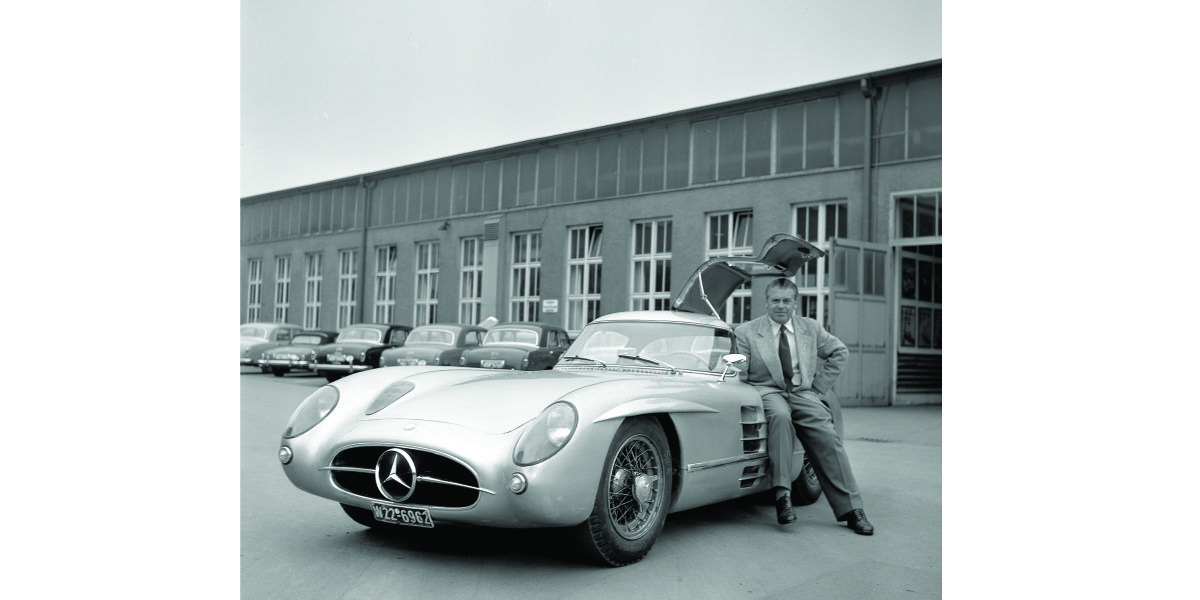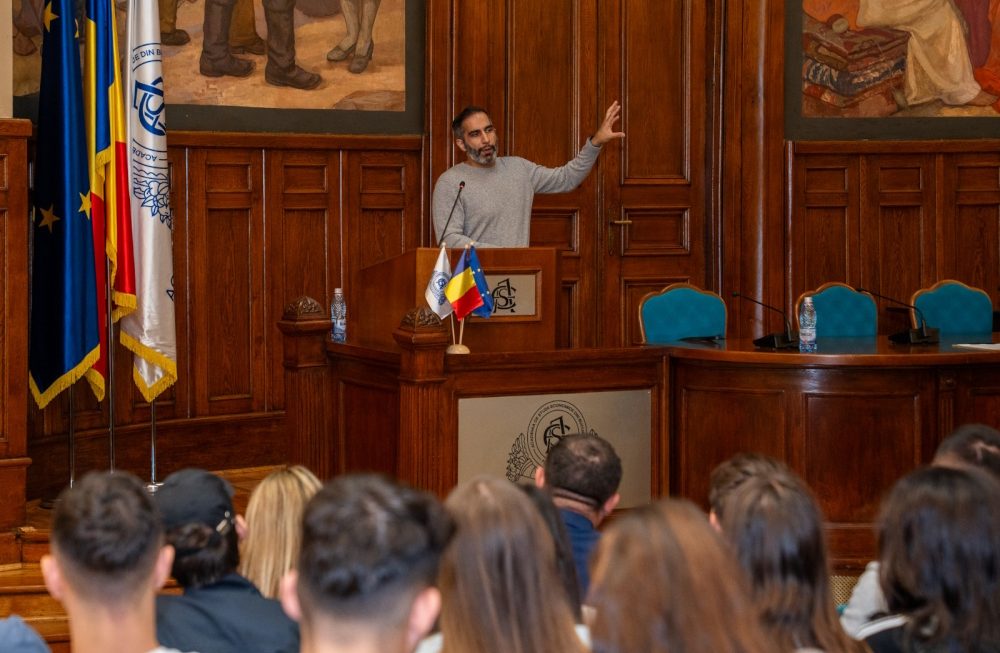
About a world record
It happened, a new record was set for the amount paid to buy a car. A Mercedes-Benz 300 SLR Uhlenhaut Coupé was awarded in a tender for 135 million euro.
Recently I made the inventory, in these pages, of the most expensive cars in the history of humanity. Obviously, based on those transactions that were found out. For a long time, which already seemed to be forever, the indisputable star was Ferrari 250 GTO. On a personal level, although in my opinion Ferrari 250 GTO is one of the most beautiful cars (although lately Ferrari 275 GTB seems to have a slightly more elegant line), I do not deny the fact that I have often wondered what justifies the huge price at which the property deeds of these creations are changed.
Porsche 911 DLS by Singer
This exotic landscape of exorbitantly priced models is not populated just by oldtimers. We can point to Porsche 911 DLS by Singer, a model inspired by the restomod trend. A limited series of only 75 units, each model having a price of over 2 million euro. But, they say, with this money you get a perfect 911, one built almost on greenfield, with each piece redesigned, with a superb engine built by Williams F1 Advanced Engineering and aerodynamics made by the same department.
Gordon Murray T.50S Niki Lauda
Gordon Murray T.50S Niki Lauda is a creation that will be produced in 25 units, at a price of over 3 million euro and that may still be available. A supercar that cannot be driven on public roads, it is intended only for use on the circuit, but it is a creation whose value will only increase, we anticipate. What does one buy with this money? Not just a supercar that promises the most advanced aerodynamics on the planet – the car is credited with the ability to run on the ceiling at 280 km/h – or a 3.9-liter aspirated V12 engine that develops 725 hp, reaches 12,100 rpm and was developed by Cosworth. You get the dream of Gordon Murray, the one who created the fabulous McLaren F1, you get a tribute to the legendary Nikki Lauda, the only driver who won an F1 race at the steering wheel of the Brabham BT46B “fan car” created by, as you guessed, the same Gordon Murray in 1978. Each model will be ennobled with a plaque that will evoke a F1 success of a car created by Gordon. His first success was in 1974 in Kyalami. When you discover how much engineering and excitement a single model can accommodate, there are chances to consider the price of over 3 million euro slightly cheaper.
Rolls-Royce Boat Tail
Another contemporary example of investment that I could prosaically define by “This is the wish I wished!”. And probably, the one who invests in a unique thing created according to his wishes does not question the way in which his creation will be appreciated or not. This is also the case of Rolls-Royce Boat Tail, a unique model, handmade by the Rolls-Royce Coachbuild division and introduced at Concorso d’Eleganza, Villa d’Este 2022 by courtesy of the owner, who wanted to remain anonymous. A $ 30 million creation. The level of detail that is reached in the case of such a creation? Well, let’s overlook the fact that the paint is unique and the car has a different shade depending on the position on the globe, on the way the sun “looks” at the car body. In the development phase, the manufacturer sent the entire body in the established shade to the customer, so that he can see if he is satisfied with the shade in his home country. The access to Rolls-Royce Coachbuild division is reserved for a small number of customers, approximately 100 of the most loyal customers of the manufacturer have access to this unique level of individualization. And it’s a place where you have to be accepted. So far, the division has developed such a project every two years, and from now on they intend to achieve such an order yearly.
“With this car the gentleman who commissioned it is forever –forever, I really say forever – a part of the history of Rolls-RoyceMotor Cars…”
Torsten Müller-Ötvös , CEO of Rolls-Royce Motor Cars.
Mercedes-Benz 300 SLR Uhlenhaut Coupé – the anatomy of a record
Obviously, we cannot talk about this model without mentioning the creator, the one who gave the name of the model.
Rudolf Uhlenhaut – the driving engineer
Half German, half British, this engineer who preferred to develop his creations behind the steering wheel and not on the technical drawing board is the main ”culprit” for the successes of Mercedes-Benz competition division from 1930 to 1950. Not just an engineer, but also a fabulous pilot. One says that in 1955, after a test drive on Nürburgring, the legendary Juan Manuel Fangio complained that the car was not very well calibrated. Rudolf Uhlenhaut was present at the circuit, he had just finished a hearty meal, he was in a suit, he got behind the wheel of the same car and obtained a lap time 3 seconds better than Fangio. Afterwards, Uhlenhaut recommended to the legendary Argentine pilot to practice a little more. Looking back at the year 1936, Mercedes-Benz considers that they hit the jackpot by enrolling Uhlenhaut in the company. In a very short time, he managed to turn W 25 into a competitive model, and he is the father of W 125 and W 154, being the genius behind the Silver Arrows. The war halted the competition program, and in 1949 he was appointed head of Mercedes-Benz Street Car Department. He could not stay away from the motorsport, he also had collaborations with the British, from whom he received an order.
Michael McEvoy – a colonel at Royal Electrical and Mechanical Engineers and a good friend of Uhlenhaut before the war, ordered him a compact racing car. Then Uhlenhaut developed the tubular frame, a solution that he would later use in Mercedes-Benz 300 SL (W 194). The success of the car in competitions put pressure on Mercedes-Benz, and Rudolf Uhlenhaut had to develop also a street version of the competition car. This is how 300SL (W198), the legendary Gullwing, was born. He was involved in the development of SL series up to R 107, he had an important influence also in the creation of W 113 – the legendary Pagoda. He was involved in everything that meant S Class until 1972. And where did Mercedes-Benz 300 SLR Uhlenhaut Coupé come from?
Car racing was extremely popular in the 1950s, and events such as Mille Miglia or Carrera Panamericana were realms where colossal prides were dueling. 300 SLR – Super Leicht Rennsport, a marriage between the sprinter skills of F1 Silver Arrow W 196 R car and the endurance of a car developed for long races, was already dominating.
It was just that Rudolf Uhlenhaut wanted more, on the one hand to offer additional protection and comfort to the pilots who were to participate in Carrera Panamericana in 1955, but also an improvement in aerodynamics by turning the roadster into a coupé. Two models were built: The Blue and The Red, thus identified by the color of the interior. Models that weighed 998 kg and an engine that developed 302 hp. The Carrera Panamericana race of 1955 was canceled by the Mexican government, so the cars could not sign any success. The cars did not “keep quiet”, the two creations were used by Rudolf Uhlenhaut as a job car. They were considered technical miracles long before their times. The top speed was over 300 km/h, at a time when sports cars in Germany barely reached 200 km/h. Uhlenhaut was commuting between Stuttgart and Munich, a distance of 220 km covered in one hour – the radars were to be put in place hardly in 1959.
Mercedes-Benz organized an auction together with RM Sotheby’s, to which only international car and art collectors were invited, as well as special customers of the company. The auctioned Mercedes-Benz 300 SLR Uhlenhaut Coupé belonged to the Mercedes-Benz Classic collection, which was not accessible to the public, and which comprised over 1100 models from 1886 to present.
The car was awarded for 135 million euro, a new record. The company will use the money to set up Mercedes-Benz Fund – an organization that offers educational and research grants in the fields of environmental science and decarbonisation to young people.
Constantin Ciobanu
Share
Share















